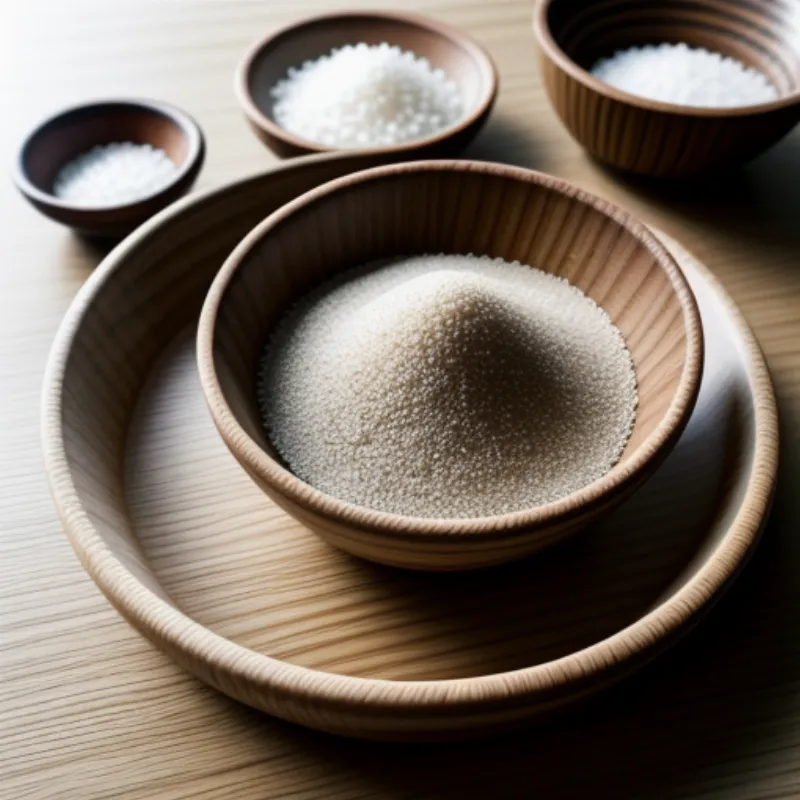Tamari, the rich and complex cousin of soy sauce, is a fermented condiment that adds an incredible depth of flavor to any dish. Originating in Japan, tamari is traditionally a byproduct of miso production, boasting a smoother, less salty profile than its soy sauce counterpart. Today, we’ll embark on a journey to craft your own homemade tamari, unlocking a world of culinary possibilities right in your kitchen!
Gathering Your Ingredients for Liquid Gold
Making tamari is a labor of love, but the reward is a condiment brimming with umami goodness. Here’s what you’ll need to get started:
- Soybeans: 1 cup, preferably organic and non-GMO
- Water: 4 cups, filtered for best results
- Sea Salt: 1/4 cup, a mineral-rich choice
- Koji Starter: 1/4 cup, the heart of fermentation (available online or at specialty stores)
Optional Additions for Nuance:
- Kombu: A small piece (about 2 inches) for added savoriness
- Dried Shiitake Mushrooms: 2-3 pieces for an earthy depth
Tools of the Trade for Fermented Flavor
Before we begin, gather the following tools to ensure a smooth and successful fermentation:
- Large glass jar or crock
- Cheesecloth or thin kitchen towel
- Rubber band or string
- Non-reactive bowl (glass or ceramic)
- Fine-mesh strainer
- Sterilized glass bottles for storage
 Ingredients for making tamari
Ingredients for making tamari
Crafting Your Own Umami Elixir: A Step-by-Step Guide
-
Preparing the Soybeans: Rinse the soybeans thoroughly and place them in a large bowl. Cover with ample water and soak overnight, or for at least 8 hours. This process softens the beans and prepares them for fermentation.
-
Cooking the Soybeans: Drain the soaked soybeans and transfer them to a pot. Add fresh water, ensuring the beans are covered by about 2 inches. Bring to a boil, then reduce heat and simmer for 2-3 hours, or until the soybeans are soft and easily mashed.
-
Introducing the Koji: While the soybeans are still warm, transfer them to your fermentation jar or crock. Sprinkle the koji starter evenly over the soybeans, gently mixing to ensure each bean is coated.
-
Creating the Brine: In a separate bowl, dissolve the sea salt in the water. Pour this brine over the soybean-koji mixture, making sure it’s completely submerged.
-
Fermentation Time: Cover the jar or crock with cheesecloth secured with a rubber band. Place in a cool, dark place, ideally around 68-77°F (20-25°C). Allow the mixture to ferment for at least 6 months, stirring gently every few days to prevent mold growth and ensure even fermentation.
-
Pressing and Bottling: After 6 months, or longer for a more intense flavor, strain the fermented mixture through a fine-mesh strainer over a bowl, pressing down on the solids to extract all the liquid. This liquid gold is your homemade tamari!
-
Enjoying Your Culinary Masterpiece: Transfer the tamari into sterilized glass bottles and store in the refrigerator. Your homemade tamari will continue to develop flavor over time.
 Fermenting tamari in a glass jar
Fermenting tamari in a glass jar
Tips and Tricks for Tamari Triumph
-
Temperature Control: Maintaining a consistent temperature is key for optimal fermentation. Avoid extreme heat or cold, as this can hinder the process.
-
Patience is a Virtue: Tamari, like all good things, takes time. Don’t be discouraged if it seems to be taking a while for the flavors to develop. Trust the process!
-
Flavor Exploration: Experiment with adding kombu or dried shiitake mushrooms during the fermentation process for additional layers of umami complexity.
-
Taste and Adjust: As your tamari ferments, don’t hesitate to taste it periodically. You can adjust the saltiness or flavor by adding a touch more salt or water as needed.
Tamari: A Culinary Chameleon
Beyond its role as a dipping sauce for sushi and dumplings, tamari’s versatility shines in countless culinary creations. Use it to elevate stir-fries, marinades, soups, and even desserts! Its rich umami depth adds a layer of complexity that store-bought simply can’t replicate.
For a tangy twist on a classic, try our recipe for Tamarind Sauce, which pairs beautifully with vegetable pakoras (find the recipe for those here!).
“Homemade tamari is a game-changer,” says Chef Anya Patel, a renowned fermentation expert. “It’s an ingredient that elevates every dish it touches, adding a depth of flavor that’s truly transformative.”
Now, go forth and embark on your own tamari adventure! And remember, the most important ingredient in any recipe is the love and passion you bring to the table. Happy fermenting!
